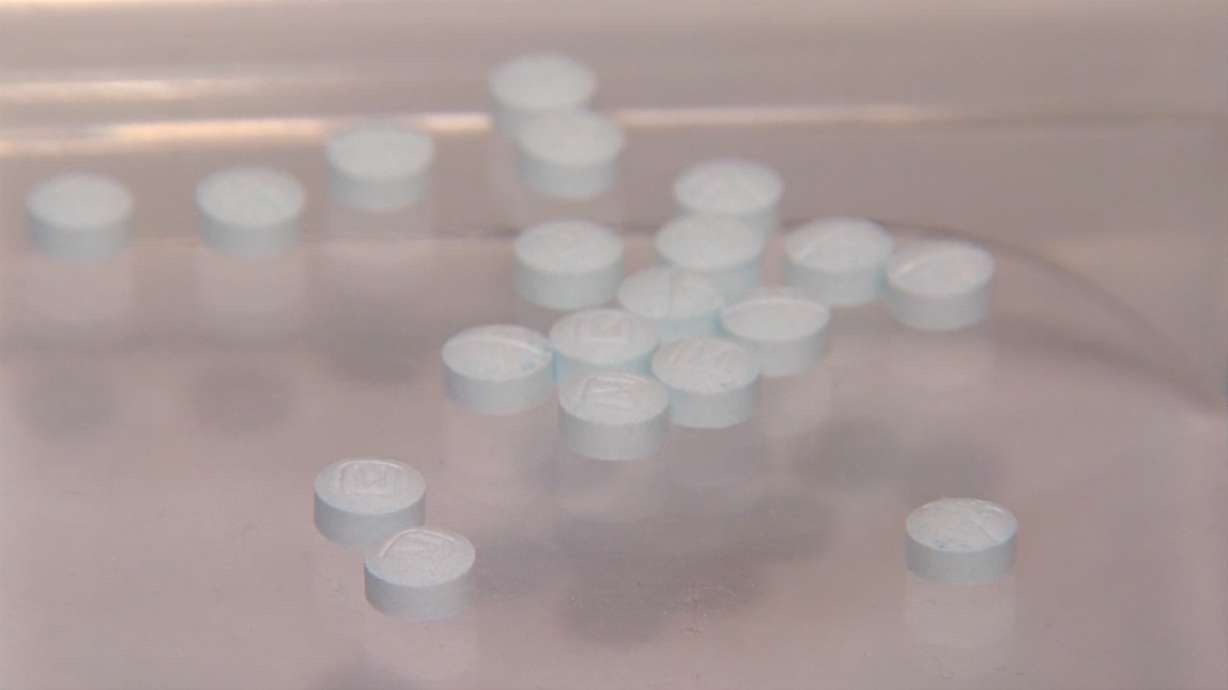Estimated read time: 4-5 minutes
This archived news story is available only for your personal, non-commercial use. Information in the story may be outdated or superseded by additional information. Reading or replaying the story in its archived form does not constitute a republication of the story.
ATLANTA, Georgia (CNN) — Of all the painkillers being used and abused, a single one — fentanyl — has been called by public health officials and even members of Congress the "third wave" of the opioid epidemic.
It's a synthetic opioid, similar to heroin, but physicians can prescribe it legally. It most frequently is prescribed for patients dealing with severe chronic pain, but over the past few years, increasing amounts of fentanyl derivatives have been manufactured illicitly and sold on the street.
The U.S. Centers for Disease Control and Prevention estimates that of the more than 64,000 U.S. overdose deaths last year from any drug, more than 20,000 were attributed to synthetic opioids, many of them related to fentanyl and its variations.
A drug more powerful than heroin
Pharmaceutical fentanyl is an opiate drug that is 50 to 100 times more potent than morphine. It is usually administered to patients in severe pain through injection, a patch or a lozenge.
Most of the fentanyl that people are buying on the street isn't diverted from pharmacies or hospitals but rather illegally made in clandestine labs, much of it chemical variations of legal fentanyl.
For example, the chemical difference between fentanyl and carfentanil is just a few molecules. But the difference in potency is significant: Fentanyl is up to 100 times more powerful than morphine, but carfentanil is up to 10,000 times more powerful than morphine. Carfentanil is used as a tranquilizer for large animals like elephants and has been blamed in fatal drug overdose outbreaks in Ohio and West Virginia.
Illicit drug makers change compositions so that if they are caught with the drug, they technically have a different chemical compound from fentanyl or some other already regulated compound. The idea is to get around the law. So the Drug Enforcement Administration is constantly adding new variations to its list of controlled substances. It's a cat and mouse game.
Deadly dose
Why add these fentanyl variations into the mix? Because they are so potent that just a little bit can be cut and mixed into other drugs such as heroin or pills, stretching out the supply.

Consider that you can buy about a kilogram of black-market fentanyl or a derivative online for about $8,000. That can be used to cut 1 million pills, and on the street, those pills can bring in a total of $20 million to $30 million.
But that potency can also be very deadly. An amount you can't even see can kill you. There's also no real quality control over the final drug. One batch may have the fentanyl evenly distributed throughout, while another may have some pills with much higher concentrations of fentanyl than others.
Made in China
According to U.S. law enforcement, most illicit fentanyl is coming from China, where weak regulations and poor monitoring have created an environment ripe for underground labs to thrive. Illegal fentanyl and the chemicals to make it can be easily bought on the internet. Most are shipped into Mexico, where they are further processed before they are smuggled over the border. Sometimes, these drugs are shipped directly into the U.S.
It's a major challenge for U.S. Customs and Border Protection agents. In fact, according to the agency, it has had to change its drug testing protocols to prevent accidental overdose from inhalation or absorption through the skin.
Related
Of the 328 air, land and sea entry points into the U.S. that the agency oversees, at least 15 locations, including some along the U.S.-Mexico border, now have naloxone, the opioid overdose antidote, in case of accidental overdose. However, not all offices are equipped with the field testing equipment needed to determine whether agents are actually handling fentanyl.
Special delivery
But there's another route that drug smugglers have also found to be effective: the U.S. Postal Service. Some drug dealers are even buying from China directly into the United States. Considering that the Postal Service handles about 154 billion pieces of mail every year, it's the proverbial needle in the haystack. Working with Customs and Border Protection, the Postal Service uses a range of tools, such as dogs, X-rays and an their intrinsic ability to spot something that just seems out of the ordinary.
Law enforcement officials say that at the moment, the government can't effectively identify which packages to inspect because so little tracking information accompanies international mail bound for the United States.
Packages sent via private couriers such UPS and FedEx come with information such as who sent them, transit stops the package made and who it is bound for, but only about half of all packages that come into the U.S. carry that information. Bills currently in Congress aim to increase oversight of international packaging to help track their origins.
Copyright 2017 Cable News Network. Turner Broadcasting System, Inc. All Rights Reserved.










